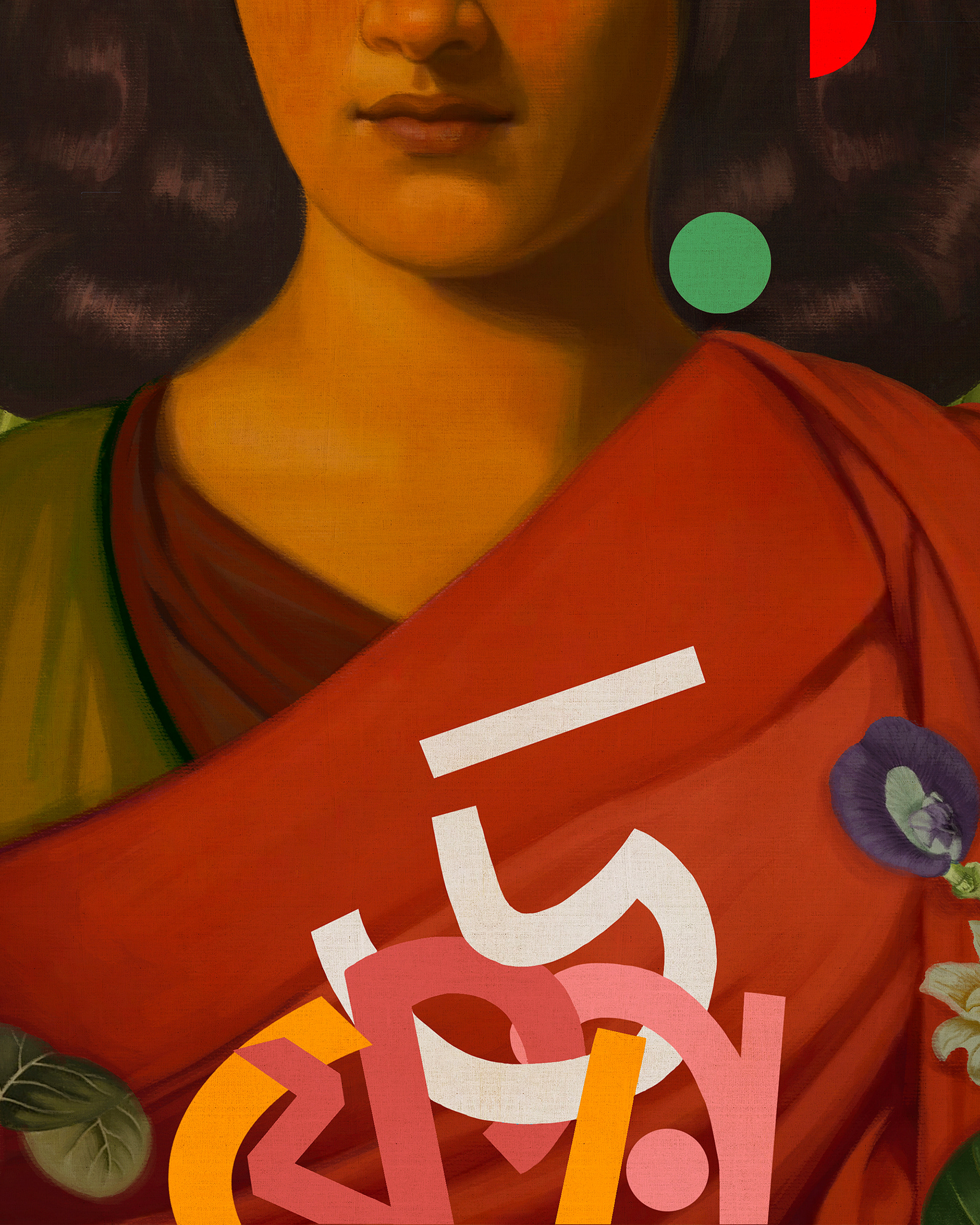A personal study of lesser-known Bengali food, script, and history from India.
Danta Chochhori:
ডাঁটা চচ্চড়ি | Danta Chochhori
A testament to the fight and struggle of a people put up in the face of extreme hunger, poverty, and man-made famine.
Colonial loot, famines, and mismanagement of resources in Bengal led to the introduction of thrift and foraging for cooking. The entry of spices like the crushed husks of the mustard ("shorshey") seeds after oil extraction, and the inclusion of leftover vegetables, vegetable peels, and a variety of stems and leaves in recipes became a norm. The use of scraps and discards gave birth to the dish, Danta Chochhori, one of the most eminent parts of Bengali cuisine on both sides of the border.
The mishmash of the Bengali Script here reads Danta Chochhori in Bengali and is inspired by a chochhori/mishmash of chopped stems, greens, and the cover designs of the magazine Ēkṣaṇa by Satyajit Ray from the 1960s where he breaks, joins, and plays around with shapes, and forms wonderfully to write the Bengali title in so many different ways.



_________________________________________________________________
Poshto:
পোস্ত | Posto/Poshto
The journey of a residual by-product to one of the finest spices.
Huge lush agricultural lands in the Bengal Presidency were transformed by the East India Company into poppy fields for opium production which led to a scarcity of vegetables.
Robbed of the produce that fed the family, the farmer’s wife experimented with the enormous amounts of dried-out poppy seeds, left as waste by the colonial masters, and found that the non-narcotic seeds when ground to a paste had a yummy nutty flavour, especially when mixed with mustard oil. This simple paste was used to enhance the taste of soaked leftover rice or just boiled potatoes. Thus, started the story of the Bengali’s beloved 'Poshto'.
To understand and use the simplest of elements reminded me of Bauhaus which I tried here with the text, and elements like the 'shil-nora', (the heavy grinding stone that was used to make the paste).




_________________________________________________________________
Panch Phoron:
পাঁচ ফোড়ন | Panch Phoron
a 5 spice blend that is greater than the sum of its parts.
Panch Phoron is a whole spice blend in the eastern states of West Bengal, Odisha, Assam, and Bihar. It consists of five whole seeds — jeera (cumin), methi (fenugreek), kalonji (nigella sativa), saunf (fennel), and radhuni (loosely translated to wild celery). They are typically stored together and used to flavour dishes in the region. Each spice in this mix is interesting in its own way with its distinctive flavour, functionality, and history, be it the influence of Buddhism, Ayurveda, or trade routes that introduced different tastes.
Gestalt theory in design is based on the idea that the human brain will attempt to subconsciously arrange different parts into an organized system that creates a whole, rather than just a series of different elements



